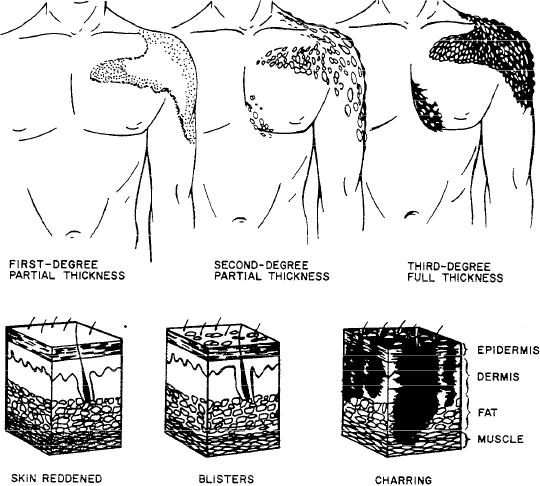
Figure 10-45.--First-, second-, and third-degree burns.
The causes of burns are generally classified as
The depth of injury to the tissues is spoken of in
thermal (heat), chemical, electrical, and radiation (as
degrees.
discussed in chap. 9). Another type of burn (white
1. FIRST-DEGREE burns are the mildest. These
phosphorous) is also discussed in this chapter. Whatever
produce redness, increased warmth, tenderness, and
the cause, shock always results when the burns are
mild pain.
extensive.
2. SECOND-DEGREE burns redden and blister
the skin. They are characterized by severe pain.
THERMAL BURNS
3. THIRD-DEGREE burns destroy the skin. They
Thermal burns are caused by exposure to intensely
can destroy muscle tissue and bone in severe cases.
hot solids, liquids, or gases. Their care depends upon the
Severe pain may be absent because nerve endings
severity of the burn and the percentage of the body area
have been destroyed. The color may vary from white
involved.
and lifeless (scalds) to black (charred from gasoline
TREATMENT. Minor burns, such as first-degree
explosions). Figure 10-45 shows the appearance of
burns over less than 20 percent of the body area and
first-, second-, and third-degree burns.
small second-degree burns, do not usually require
immediate medical treatment. Burns of the face are the
It is important to remember that the size of the
exception to this rule. The following are general rules
burned area may be far more important than the depth
for treating burn victims:
of the burn. A first-degree or second-degree burn that
covers a large area of the body is usually more serious
1. Examine for and relieve respiratory distress.
than a small, third-degree burn. A first-degree sunburn,
Always anticipate respiratory difficulty when there are
for example, can cause death when a large area of the
burns around the face or when the victim has been
body is burned.
exposed to hot gases or smoke, since these may cause
10-30

